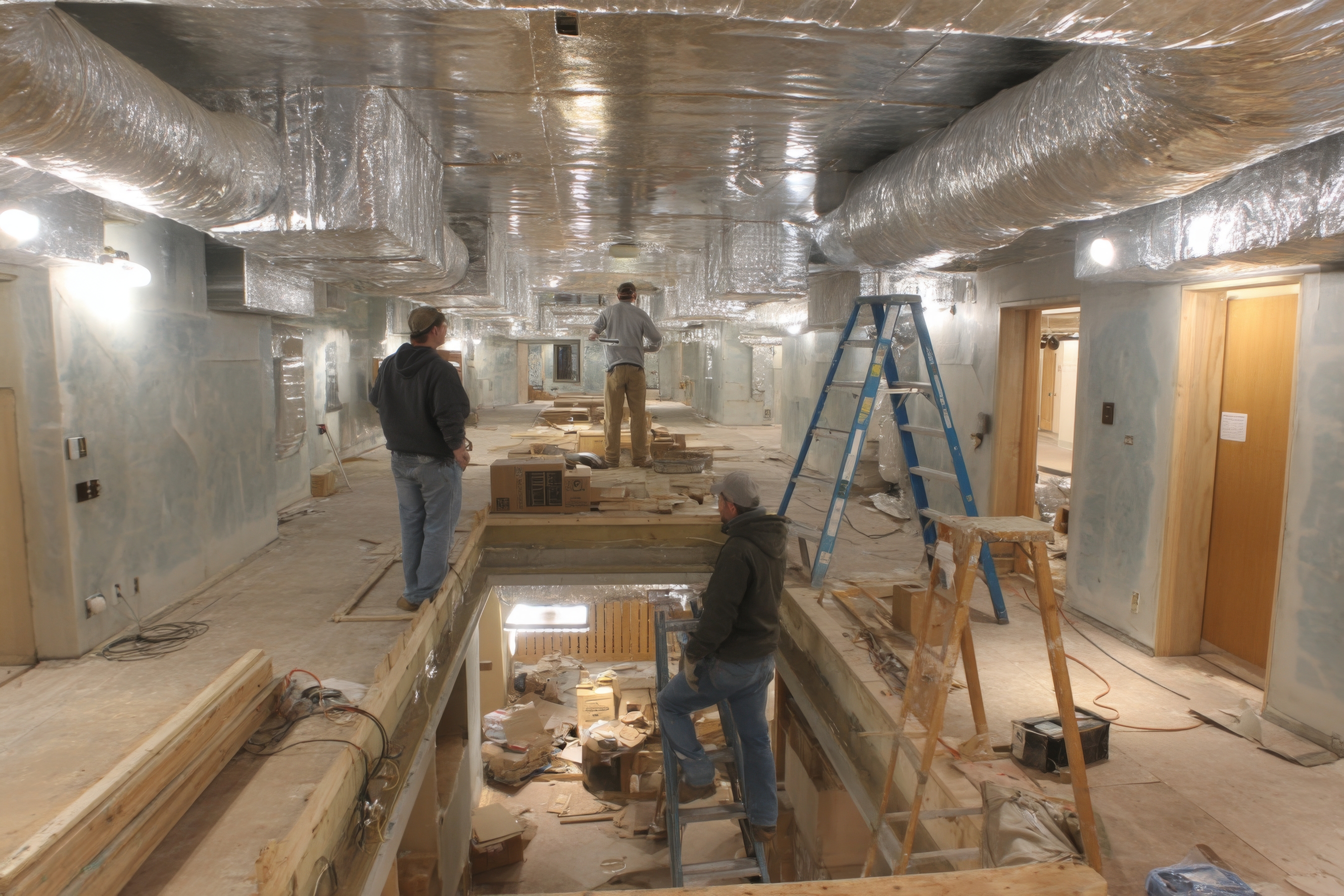Mechanic's Liens in Washington State: A Property Owner's Guide to Protecting Your Project

A hypothetical: you’ve hired a general contractor for your commercial building renovation and paid them in full. Three months later, a subcontractor you've never spoken with files a lien against your property for $45,000.
This situation happens more often than most Washington property owners realize. Mechanic's liens give contractors and suppliers powerful collection rights that can put your property at risk, even when you've done everything you thought was right.
What Creates a Valid Lien in Washington?
Washington law allows anyone who provides labor, materials, or equipment for property improvements to file a lien. General contractors can file them. So can subcontractors, material suppliers, equipment rental companies, and even design professionals in certain situations.
Here's the part that catches property owners off guard: the lien attaches to your property, not to whoever hired the work. Even if you pay your contractor every dollar owed, you can still face liens from subcontractors or suppliers that contractor failed to pay.
Valid liens in Washington require three things:
- Work or materials that improved the property
- Proper notice given to the property owner
- Timely filing with the county recorder's office
The legal theory behind this seems straightforward. Your property gained value from the work performed, so it should secure payment for the people who provided that value. In practice, this creates substantial risk for property owners.
Timeline Rules That Determine Valid Liens
Washington's lien deadlines vary depending on what party files. Prime contractors (the ones you hired directly) have 90 days after their last day of work to file a lien. Subcontractors and suppliers also have 90 days, but their clock starts from their last day of work, which might differ from when the general contractor finished.
Missing these deadlines by even one day can invalidate the lien. Courts don't provide extensions or second chances with statutory deadlines.
The filing itself involves recording a claim of lien with the county recorder where the property sits. The lien claimant must also serve you with a copy within 14 days of recording. Failure to provide proper service can invalidate an otherwise valid lien.
Notice Requirements Before Liens Get Filed
Washington law requires most subcontractors and suppliers to send preliminary notices before they can file liens. These notices inform property owners that someone beyond their direct contractor is providing work or materials for the project.
Subcontractors and suppliers must send these notices within 60 days of first providing labor or materials. The notice identifies who's working on your project and warns that they may file a lien if they don't get paid.
Prime contractors (those in direct contract with property owners) don't need to send preliminary notices. They already have a direct contractual relationship with you.
Many subcontractor liens fail because the claimant never sent the required preliminary notice or sent it too late. This protection only works if you know how to check for it.
Payment Timing on Private Construction Projects
Washington's prompt payment statutes apply only to public works projects, not private construction. On private projects, payment timing is governed entirely by the contract terms between the parties.
Without statutory requirements, private project payment disputes depend on what the contract says. This makes contract language about payment terms particularly important for private work.
Many private construction contracts include payment schedules and timing requirements, but these are contractual obligations rather than statutory mandates. Parties can negotiate payment terms that work for their specific project.
The absence of statutory prompt payment requirements on private projects means that standard contract terms become even more important for managing payment expectations and preventing disputes.
How Retainage Works Under Washington Law
Washington law now limits retainage on private construction projects to 5% of the contract price, effective July 2023. Before this law, private project retainage amounts were purely contractual matters with no statutory limits.
The statute requires owners or contractors to pay interest at 1% per month on amounts not paid within 30 days after work completion and acceptance. This applies to private commercial construction projects but not to single-family residential construction of fewer than 12 units.
Parties can substitute retainage bonds for actual fund withholding. When a contractor tenders a retainage bond meeting statutory requirements, the owner must accept it and release the retained funds within 30 days.
Many subcontractors still face double retainage situations. The owner withholds 5% from the general contractor, and the general contractor withholds 5% from subcontractors, resulting in 10% of subcontractor payments being held back even though individual withholding is limited to 5%.
How Property Owners Can Protect Themselves Early
The most reliable protection involves requiring your general contractor to provide payment and performance bonds. These bonds guarantee that subcontractors and suppliers get paid even if your contractor runs into financial trouble. They also shift lien risk away from your property.
Bonding costs money, typically 1-3% of the contract price. Many property owners skip bonds on smaller projects to save costs, then regret that decision when liens appear.
Joint checks provide another layer of protection. You write checks payable to both the general contractor and major subcontractors or suppliers. This helps ensure the money actually reaches the people who did the work.
Lien releases work well for payments throughout the project. Before paying your contractor, require written confirmation that all subcontractors and suppliers from the previous billing period have been paid. It may benefit you to get unconditional releases from major subcontractors and suppliers directly.
What Happens After Someone Files a Lien
A recorded lien clouds your property title. You can't sell or refinance the property without addressing the lien. Title companies won't issue clear title policies with outstanding liens.
The lien doesn't automatically mean you owe the money. Liens get filed incorrectly or fraudulently with some regularity. Filing is just the first step in the collection process.
After filing, the lien claimant has eight months to file a lawsuit to foreclose on the lien. Should the lien claimant miss that deadline, the lien expires automatically. Sometimes lien claimants may file liens hoping you'll pay to make the problem disappear, but never follow through with foreclosure lawsuits. Every case is unique with its own variables.
Lien foreclosure lawsuits function similarly to mortgage foreclosures. If the claimant wins, they can force the sale of your property to collect what they're owed.
Options for Removing or Disputing Invalid Liens
When faced with a lien you believe is invalid, you have several options. The simplest involves paying the amount into court and bonding around the lien. This removes the cloud from your title while you dispute the lien's validity.
You can also file a motion to remove the lien if it contains obvious defects. Common defects include missed deadlines, improper service, lack of preliminary notice, or failure to include required information in the lien claim.
Some liens get filed for leverage in payment disputes. The contractor knows they're not entitled to the full amount but files anyway hoping you'll negotiate. These situations often resolve through settlement rather than litigation.
Differences Between Residential and Commercial Projects
Washington's lien law treats residential projects differently in certain respects. Residential property owners get additional protections, including stricter notice requirements for lien claimants and different deadline calculations.
Owner-occupied residences receive the most protection. Washington law requires subcontractors working on owner-occupied residential projects to provide even more detailed preliminary notices.
Commercial projects generally follow the standard rules described throughout this article. The distinctions matter most when determining whether specific notice requirements apply.
Why Some Liens Succeed While Others Fail
Valid liens succeed when claimants followed every procedural requirement and can prove they provided labor or materials that weren't paid for. The claimant bears the burden of proving these elements.
Common reasons liens fail include:
- Missed filing deadlines
- Failure to send required preliminary notices
- Improper service of the lien claim
- Work that didn't actually improve the property
- Exaggerated or inflated claim amounts
- Waiver of lien rights in the underlying contract
Property owners who understand these requirements can often identify defects that invalidate liens entirely.
The Real Cost of Liens Beyond the Claim Amount
Even when you successfully defeat a lien, you've spent time and money addressing it. Legal fees for lien disputes typically start around $5,000 and can reach $20,000 or more for contested cases.
The title cloud prevents property transactions during the dispute. Sales fall through. Refinancing gets delayed. Business plans get disrupted.
Some lien claimants know the nuisance value of liens and file them hoping you'll pay something just to make the problem disappear quickly. This creates a difficult decision about whether fighting the lien costs more than paying it.
Preventing Liens Before Projects Start
Strong contracts with general contractors provide your first line of defense. Consider including provisions requiring the contractor to:
- Maintain current payment and performance bonds
- Provide regular lien releases from subcontractors and suppliers
- Defend and indemnify you against any liens arising from their failure to pay
- Maintain adequate insurance
- Provide regular documentation of payments to subcontractors
Monitor preliminary notice letters that arrive during construction. Each notice tells you who's working on your project. If you're not receiving these notices on projects involving multiple subcontractors, something may be wrong with your general contractor's payment practices.
Consider requiring your contractor to provide a list of all subcontractors and suppliers at the project start. This helps you track who should be sending preliminary notices.
When Liens Involve Disputed Work Quality
Some liens arise not from non-payment but from disputes about whether work was completed properly or whether change orders were authorized. These situations create more complex legal issues.
If you withheld payment because work was defective, the contractor or subcontractor may still file a lien for the full contract amount. You'll then need to prove the defects and calculate appropriate payment reductions.
Change order disputes create similar problems. The contractor claims they performed extra work worth $50,000. You claim the changes were minor and included in the original scope. They file a lien. Now you're litigating both the lien validity and the underlying contract dispute.
Protecting Your Project From Start to Finish
Successful projects require attention to lien prevention from the first contract through final payment. Small projects involving a few subcontractors may need less formal procedures than large commercial developments with dozens of trades.
Match your protection level to your project risk. A $2 million commercial project justifies the cost of bonds, formal lien release procedures, and regular monitoring. A $50,000 tenant improvement might rely on simpler protections.
Every property owner situation differs based on the project scope, contractor relationships, and available budget for risk management measures. The strategies that work for large developers may be overkill for smaller property owners, while insufficient protection can prove costly for major projects.
Washington's lien laws provide powerful collection tools for contractors and suppliers, but they also offer property owners multiple opportunities to protect themselves through proper planning and documentation. The key involves implementing appropriate protections before problems arise rather than fighting liens after they appear.
If you're planning a construction project in Washington state and want to minimize lien risk, speaking with an attorney experienced in construction law can help you implement appropriate protections for your specific situation. K&S Canon assists property owners throughout the Seattle area with construction contract review and lien prevention strategies.
Contact K&S Canon to discuss how to protect your property during construction projects.
Disclaimer: This information is for educational purposes only and does not constitute legal advice. Washington's lien laws contain numerous technical requirements and exceptions not fully addressed in this overview. Every construction project involves unique circumstances. Consult with a qualified construction attorney to discuss your specific situation and protect your property rights. Laws and court interpretations change over time, and this article reflects Washington law as generally applied but may not account for recent changes or your particular circumstances.
TRENDING POSTS
Mechanic's Liens in Washington State: A Property Owner's Guide to Protecting Your Project
October 10, 2025
Shareholder Agreements vs. Corporate Bylaws: Which Document Controls What in Your Seattle Corporation



